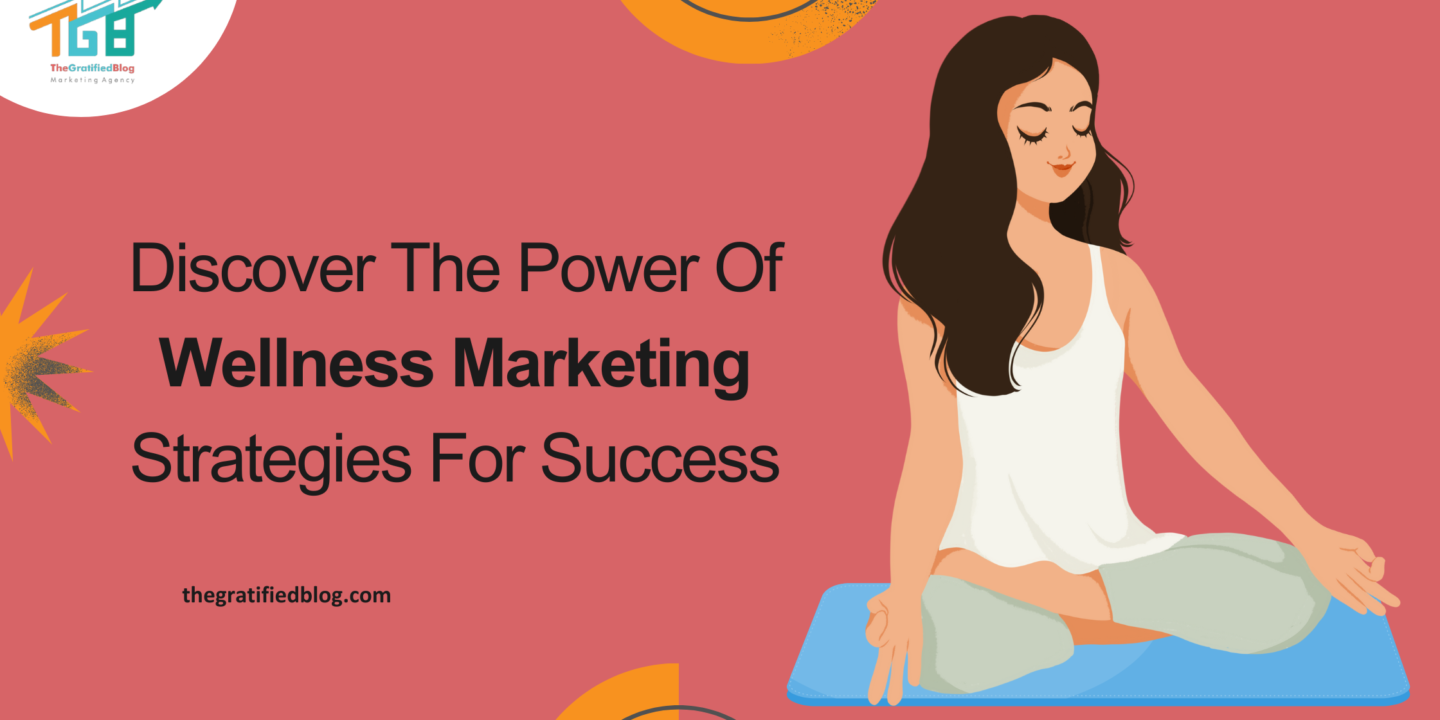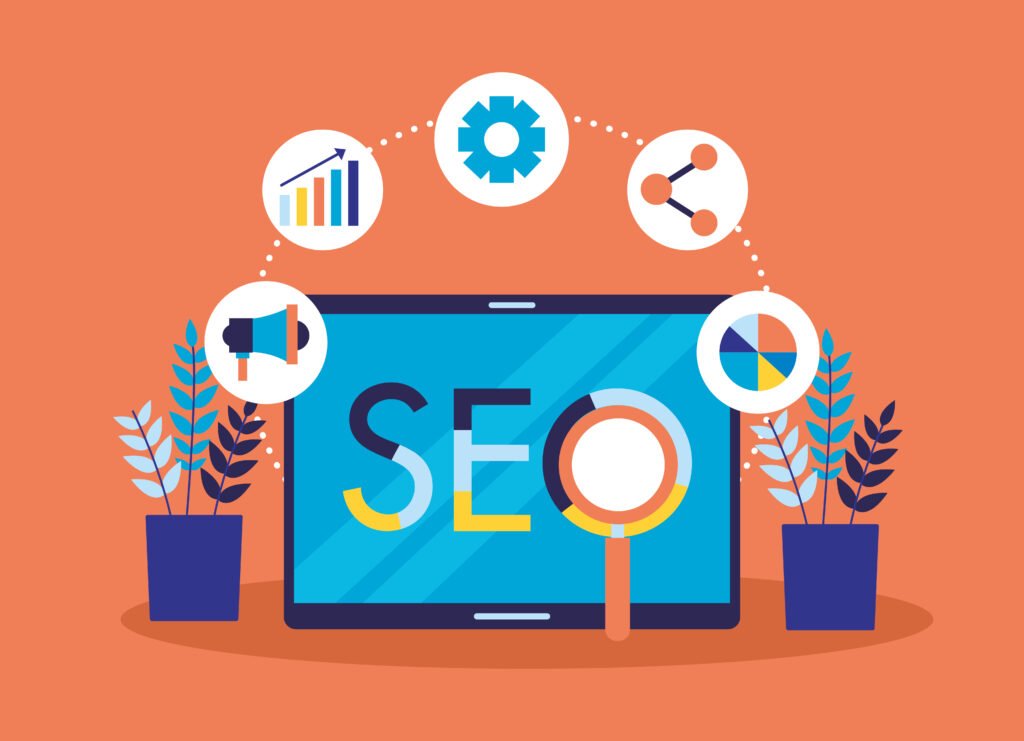
In today’s fast-paced and consumer-centric market, “wellness marketing” Has become a potent strategy for businesses looking to connect with health-conscious consumers. People prioritize their physical, mental, and emotional well-being, seeking products and services that harmonize with these aspects of their lives. Wellness goals. This shift in consumer behavior has significantly focused on incorporating wellness elements into marketing strategies.
This blog delves into the world of wellness marketing, exploring its definition, importance, and various strategies Businesses can employ to engage their target audience successfully and understand the evolving trends in wellness marketing. We’ll cover everything you need to know to navigate this dynamic and impactful marketing landscape.
So, let’s dive deep into wellness marketing and uncover the key insights and tactics to elevate your brand’s connection with health-conscious consumers.
What Is Wellness Marketing?
Wellness marketing is the strategic approach to promoting products or services that contribute to individuals’ overall well-being. It extends beyond conventional marketing by emphasizing physical health, mental wellness, emotional balance, and spiritual fulfillment.
This type of marketing emphasizes a holistic view of wellness, recognizing that consumers today prioritize not just functional benefits but also seek products and experiences that enhance their quality of life.
Importance of wellness marketing in today’s consumer-focused market
Due to several key factors, wellness marketing is essential in today’s consumer-focused market. Firstly, there’s a noticeable shift in consumer preferences towards health-conscious choices. Modern consumers are more informed about the impact of their lifestyle choices on their well-being. They look for products and services that fulfill their functional needs and contribute positively to their health and wellness. Wellness marketing allows businesses to align with these evolving consumer values, fostering stronger connections and brand loyalty.
Additionally, the ascent of social media and digital platforms has amplified the visibility of wellness-related content and conversations. Consumers actively discuss health, fitness, mental well-being, and self-care online. Wellness marketing enables brands to leverage these digital avenues to effectively connect with and captivate their target audience. Businesses can position themselves as reliable experts in the wellness space by sharing valuable content, promoting wellness-focused products, and participating in relevant conversations.
Additionally, wellness marketing is crucial in addressing societal trends, including the increasing emphasis on sustainability, ethical sourcing, and holistic lifestyle choices. Consumers are concerned about their well-being and the consequences of their consumption decisions on the environment and society. Wellness marketing strategies emphasizing sustainability, transparency, and social responsibility resonate strongly with today’s conscious consumers, driving brand preference and market differentiation.
Having understood its definition and significance in today’s consumer-focused market, let’s delve into its strategies.
7 Strategies For Wellness Marketing
Content Marketing

Content marketing in wellness involves creating and sharing valuable, relevant, and educational content that resonates with the target audience’s wellness goals and interests. This content may encompass blog posts, articles, videos, podcasts, infographics, and social media posts.
Through delivering informative and engaging content, businesses can position themselves as authorities in the wellness niche, establish trust with their audience and draw in potential customers seeking wellness-related information and solutions.
Effective content marketing in wellness also includes storytelling techniques that connect emotionally with the audience. Brands can share success stories, testimonials, and experiences related to their wellness products or services, showcasing real-life transformations and demonstrating the tangible benefits of adopting a wellness-focused lifestyle. Through compelling storytelling, content marketing can inspire, educate, and motivate consumers to take positive actions toward improving their well-being.
Influencer Partnerships

Influencer partnerships in wellness marketing involve partnering with individuals with a substantial following and influence in the wellness industry. These influencers can be fitness experts, nutritionists, wellness coaches, yoga instructors, or individuals known for promoting a healthy lifestyle.
Through collaborations with influencers, brands can utilize their credibility, expertise, and reach to encourage wellness products or services to a targeted audience that trusts and values their recommendations.
Effective influencer partnerships in wellness marketing often involve authentic and transparent collaborations. This includes aligning the brand’s values with the influencer’s, ensuring the partnership feels genuine and resonates with the audience. Influencers can generate content like sponsored posts, reviews, tutorials, and endorsements that showcase how the brand’s offerings contribute to a healthier and more balanced life. Through influencer partnerships, brands can tap into existing communities, increase brand awareness, and drive engagement and sales within the wellness market.
Social Media Marketing

Social media marketing in wellness involves utilizing various social media platforms such as Instagram, Facebook, Twitter, TikTok, and LinkedIn to promote wellness products or services, interact with the target audience, and enhance brand visibility. This involves crafting and sharing captivating content, conducting focused marketing and advertising campaigns, and fostering meaningful interactions with followers and potential customers.
Social media platforms offer an excellent environment for brands to showcase their wellness offerings, share educational content, and connect with a community of health-conscious individuals. Effective social media marketing in wellness often involves comprehending the distinct preferences and behaviors of the target audience on each platform.
For example, Instagram is famous for visual content showcasing fitness routines, healthy recipes, and wellness tips. At the same time, LinkedIn may be more suitable for sharing thought leadership articles and professional insights related to wellness. By tailoring content and strategies to each platform’s strengths and audience demographics, brands can maximize their impact and engagement in the competitive wellness market.
Email Marketing

Email marketing in wellness involves using email campaigns to engage with current and potential customers, promote wellness products or services, and nurture relationships with subscribers. This approach consists of creating an email roster of interested individuals, segmenting the list based on demographics or interests, and sending targeted and personalized emails that resonate with the recipients’ wellness goals.
Email marketing allows brands to deliver valuable content, special offers, educational resources, and updates directly to subscribers’ inboxes, creating opportunities for engagement and conversion. Effective email marketing in wellness often includes crafting enticing subject lines and email content that capture attention and provide value to recipients.
This may include sharing wellness tips, announcing new product launches, inviting subscribers to exclusive events or webinars, and offering discounts or promotions. By leveraging email automation tools, tracking performance metrics, and continuously optimizing campaigns based on data insights, brands can effectively leverage email marketing to drive engagement, loyalty, and sales within the wellness market.
SEO And Website Optimization

SEO and website optimization in wellness marketing involves strategies to improve a brand’s visibility and ranking, show up in search engine results pages (SERPs), and improve the user experience on their website. This involves refining website content with pertinent keywords related to wellness, improving site speed and mobile responsiveness, implementing metadata and structured data markup, and acquiring quality backlinks from reputable sources. By focusing on SEO, brands can attract organic traffic from individuals actively searching for wellness-related information or products, increasing their online visibility and potential customer base.
Furthermore, website optimization is crucial in converting visitors into customers by creating a seamless and user-friendly browsing experience. This includes straightforward navigation, compelling calls to action, informative product descriptions, easy checkout processes, and engaging multimedia content. By continually optimizing their websites for search engines and user experience, wellness brands can improve their online presence, attract qualified leads, and drive conversions and revenue.
Wellness Events And Experiences

Wellness events and marketing experiences involve organizing or participating in events that promote wellness products, services, or lifestyle choices. These events range from workshops, seminars, and retreats to virtual webinars, fitness challenges, and community gatherings.
Through the development of immersive and interactive experiences, brands can captivate directly with their target audience, showcase their offerings, and build strong emotional connections that resonate beyond traditional marketing efforts.
Influential wellness events and experiences often focus on providing value and fostering meaningful interactions with participants. This may include hosting expert-led sessions on wellness topics, offering hands-on experiences with products or services, providing opportunities for networking and socializing, and incorporating elements of education, entertainment, and inspiration.
By creating memorable experiences that align with consumers’ wellness aspirations and preferences, brands can strengthen brand loyalty, generate buzz, and differentiate themselves in the competitive wellness market.
Community Building And Engagement

Community building and engagement in wellness marketing involve fostering and nurturing a community of individuals with similar interests interested in health, fitness, and overall well-being. This can be accomplished through social media groups, online forums, community events, and loyalty programs.
By fostering a sense of belonging and connection among community members, brands can cultivate trust, advocacy, and loyalty, driving long-term relationships and brand affinity. Effective community-building and engagement strategies often focus on creating valuable and relevant content that encourages interaction and conversation within the community.
This may include hosting Q&A sessions, sharing user-generated content, facilitating wellness discussions, and providing exclusive benefits or rewards for community members. Brands can also leverage community feedback and insights to inform product development, improve customer experiences, and better tailor marketing strategies to meet their community members’ needs and preferences.
These are just a few strategies you can employ in wellness marketing; consider exploring additional strategies. Now, let’s delve into the future trends of wellness marketing.
Future Trends In Wellness Marketing
Predictions for upcoming developments in wellness marketing
This includes a more profound integration of personalized health data, AI-driven wellness products, service recommendations, and an increased focus on holistic well-being encompassing mental health, emotional wellness, and social connections.
Brands will likely leverage technology and data analytics to provide customized experiences that align with individual preferences and goals, leading to more personalized and effective wellness marketing strategies.
Emerging technologies
Technologies such as wearable devices, virtual reality (VR), augmented reality (AR), and telehealth platforms are poised to significantly impact wellness marketing strategies. These technologies enable brands to create immersive experiences, deliver virtual wellness services, track real-time health metrics, and engage with consumers innovatively.
By embracing these technological advancements, brands can enhance customer experiences, drive engagement, and stay ahead in the rapidly evolving landscape of wellness marketing.
Conclusion
Well, wellness marketing has become an essential strategy for businesses targeting health-conscious consumers. By using holistic approaches, digital tools, and building strong relationships, brands can promote their products and inspire people to live balanced lives.
As the wellness industry grows, there are many opportunities for effective and ethical marketing strategies, showing that wellness is more than just a trend but a crucial part of how businesses connect with customers.
However, if you still have any inquiries regarding the blog, please leave them in the comment section. We will be happy to answer you.
Thanks for reading 🙂








No Comments